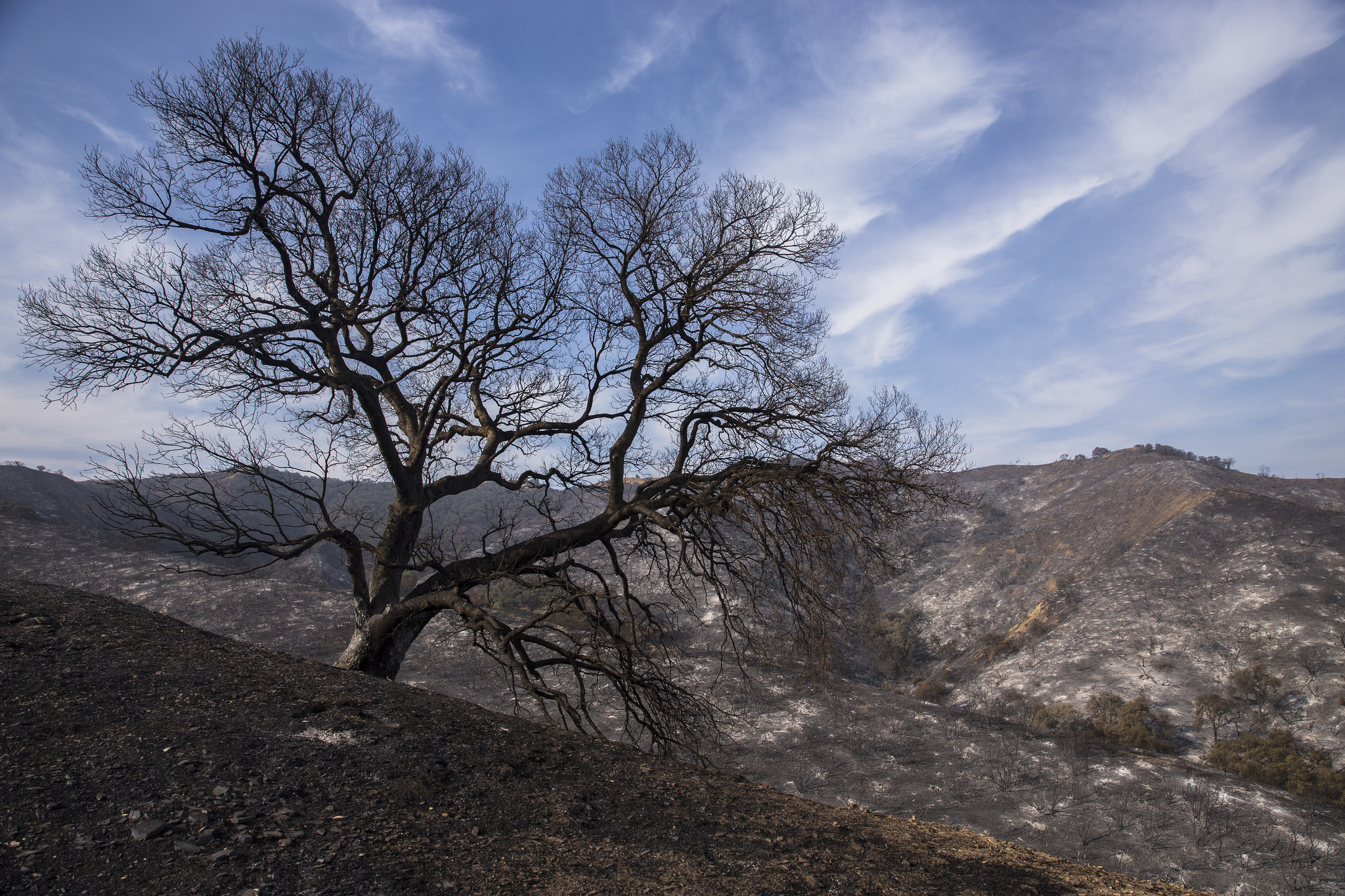Winds roar. A single spark soars in the night sky. It grows. Soon a field illuminates, a hillside, a forest. The last rains were months ago and the next chance of a storm is unknown. Flames rage toward homes. Thousands flee into the darkness, headlights searching for a way out of the suffocating smoke.
This is our new reality. It’s no secret that this scary scene has played out with greater and greater frequency over the last few years. We now stand at the crossroads of a chronic state of climate emergency aimed right at California.
Over 83,000 square acres of land are currently ablaze in the southland. From Ventura in the west to San Bernardino in the east, over 180 structures have been burned and hundreds of thousands of people have been evacuated from their homes to find safety from the flames. The largest of these fires, the Thomas Fire in Ventura, the Creek Fire in Sylmar, and the Rye Fire in Santa Clarita are at near zero containment and the Santa Ana winds have stoked new flames along the Sepulveda Pass, snarling traffic on the 405.
This shot from @yamphoto is going to be an iconic California wildfire image pic.twitter.com/cH8Xkaf8sD
— Chris Megerian (@ChrisMegerian) December 5, 2017
A new study has found the arctic ice melting could have catastrophic effects on California’s climate, driving our forests and water supply to the breaking point. The melting ice wrecks havoc on weather patterns above California, strengthening a ridge of high pressure that keeps cool, wet arctic storms from reaching the state. Over the next 20 years, it could continue to impact our rainfall and snowpack creating ripe conditions which brought us our worst drought in over 1200 years.
These higher temperatures will also lead to a quicker melting of what little snow our mountains do get, leaving our thirsty trees to wither and die. This is exactly what we saw during our last drought cycle which killed over 102 million trees in California and turned our forests into a tinderbox teetering on the edge of disaster.
“The warming of California has increased drought conditions. We’re much more likely to have water drawn out of soil, drawn out of vegetation and earlier in the year,” Noah Diffenbaugh, a professor of Earth Systems Sciences at Stanford University says.
This is critical, as the effects of one month of early snowmelt can double into two months of drought.
Keep these brave men & women fighting major Southern California brush fires right now in your thoughts #ThomasFire #CreekFire #SoCal #Ventura pic.twitter.com/0uuIIEqleO
— TrivWorks (@TrivWorks) December 5, 2017
Over the last 30 years, climate change has fueled the occurrence of extreme wildfires in California, with the Sierra Nevada alone seeing an over 270% increase. When expanded out to the whole of the Southwestern United States, that figure almost doubles to four and a half times with those fires consuming over 12 times more land than in the past.
It is critical we not only try our hardest to mitigate the effects of climate change, but also work to heal these beautiful lands when they are damaged by it.
For over 40 years, TreePeople has planted thousands of native trees and plants in charred wildlands, to restore the oaks and chaparral that are best suited to survive the threats of drought and fire. When the ashes settle from the infernos across Southern California, we will be ready to act on the front lines of climate change.

